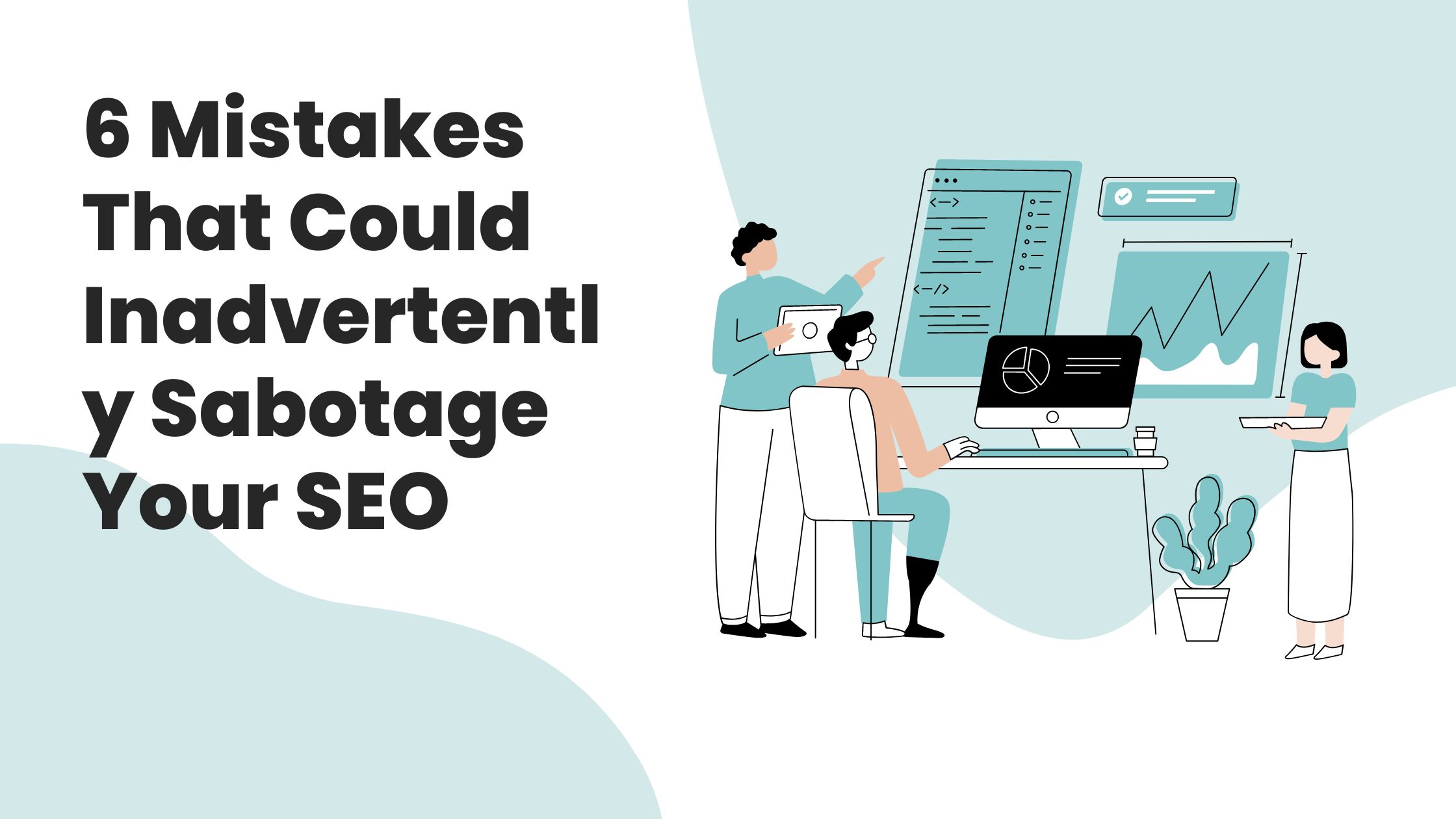If you want to have a strong online presence as a Small Business Owner, doing well in organic search results will probably be a top goal. So much so that you may easily get caught up in adjusting your Campaign, frequently changing your Keywords, and employing every gimmick available to bring you there. Unfortunately, this can result in you harming your Search Engine Optimization (SEO) efforts more than helping them.
According to SEO Company in Ahmedabad, there are so many factors to take into account when optimizing your website for better SEO results that it can occasionally feel overwhelming. But it’s important to keep in mind that Google often updates its algorithms to prevent Websites showcasing unethical SEO practices from appearing in the search results.
SEO is a game of inches. It’s the little things that can make all the difference in rankings. Unfortunately, some small mistakes can also sabotage your SEO efforts and push you down in Google’s rankings—even if you don’t see it happening.
- Unoptimized Keyword Density
keyword density is the number of times a keyword appears in relation to the total number of words on a page. It’s calculated by dividing the total number of instances of your target keyword by the total number of words on that page.
But if you go too far with this process or do it incorrectly altogether, there are some serious consequences that could adversely affect how well visitors find what they want when they visit your site through organic search results—or worse yet: hurt their experience so much that they leave for good!
- Keyword Stuffing
While keyword stuffing is not a word on its own, it’s a phrase that refers to the practice of packing your content with keywords. Here SEO Company in Ahmedabad says to use correctly; keywords are an important part of SEO because they help search engines categorize your site and give it relevance to a particular topic.
There are plenty of ways you can use keywords without making it obvious that they’re there—one way is to put them in the title tag: if you create compelling titles like “How To Make Potato Chips,” then users will want to click through just for that information alone!
- Unoptimized Images Without Alt Tags
Alt tags are the text descriptions that describe an image on a webpage. They’re important for accessibility and search engine optimization (SEO).
For SEO, alt tags should be unique to each image on your site. If you have more than one image of the same object, use different alt tags for each, so they don’t compete with each other in Google’s indexing algorithm.
And while there isn’t any official length guideline for alt tags (they can be as short or long as you want), it’s generally best to keep them under 80 characters—the shorter, the better!
- Poorly Functioning Website
If a website is difficult to use, visitors may turn the page in search of an easier-to-use site. It’s hard enough for people to read a website with good-quality content. If you can’t even resize text or zoom in and out on images, your readers will be more likely to leave your site than any other potential problem.
- Content Not Optimized For Long-Tail Keywords
Long-tail keywords can also help you target niche audiences that are interested in a very specific topic or topic area (like SEO agencies serving small businesses). Let’s say you run an SEO agency and have written blog posts on topics like “Content Marketing Tips For Startups.
You could include these long-tail phrases as part of the title or headline of each article so that it shows up when people search for those terms – which means even more organic traffic!
- Not Using Internal Links.
An internal link is a hyperlink on one page of your website that points to another page on your site. According to SEO Company in Ahmedabad its often used to help users navigate the site, but it can also be used by search engines (and, therefore, you) to increase the length and number of keywords on a given page—two things that are important for SEO.
To ensure that you’re using internal links in an efficient manner, here are some best practices:
- Ensure every article has at least one internal link to its parent post or category.
- Try not to have more than 20% of all links pointing outside of your site; if this happens, try restructuring some pages so that they have more internal links or use anchor text (text next to hyperlinks) when linking out instead.
Conclusion
Investing in SEO is a great way to get your business noticed online, but there are some mistakes that can inadvertently sabotage your efforts and waste your time. You need to be aware of these errors so that you can avoid them in future projects!

